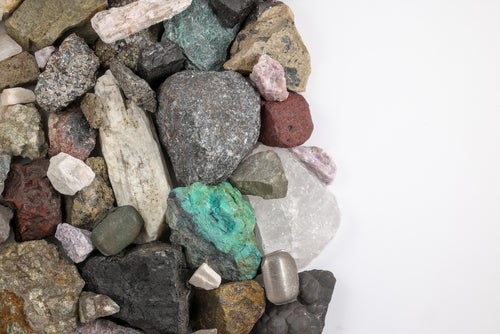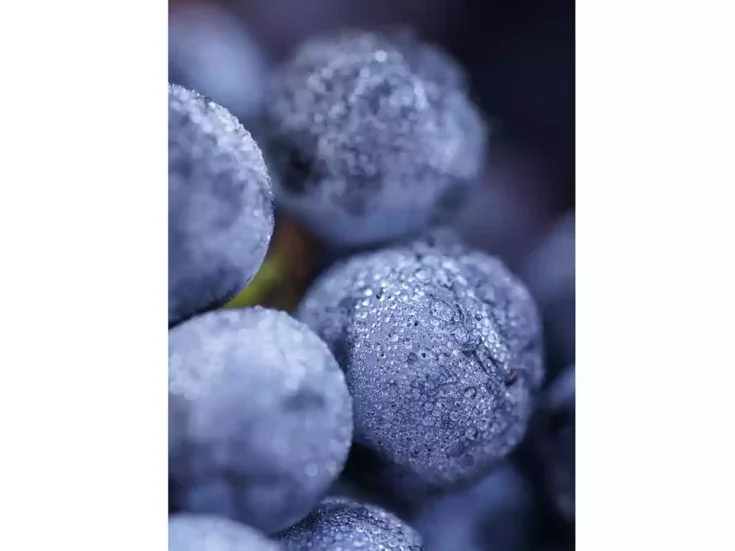
In a piece first published in WFW57 in September 2017, David Schildknecht traces the rise of minerality in wine writing and discussion, and asks if it is anything more than an “empty buzzword.”
Like many concepts beloved of wine writers, winemakers, and wine marketers, the emergence of “minerality,” however recent, seems already to be lost in the mists of time. And “misty” would be a euphemistic characterization of what Jancis Robinson MW has dubbed “the illusive M-word.” Two organizers of a 2014 symposium on “Minerality in Wine,” Antonio Palacios and David Molina, referred to a “spectacular boom” in its usage. The following year, they published research into the “Chemical Basis of Minerality Perception in Wines,” acknowledging and seeking to address the “vagueness” of references to “mineral” and “minerality,” which risk becoming empty buzzwords.
Accounts alleging what it is to experience minerality in wine are scarcely less diverse than speculations concerning its origins. But can there be any point in proposing causal hypotheses until or unless we agree on the experience that requires explaining? Self-styled “postmodern” winemaker Clark Smith refers to “an energetic buzz in [a] wine’s finish.” Many commentators count minerality closely akin to impressions of acidity. Others adduce salinity. Olivier Humbrecht MW is among many who take the sign of minerality to be salivary stimulation, a phenomenon more closely associated with the presence of glutamate, which food writers characteristically refer to as “meatiness.” And then there are those who intimate that the experience can only be apprehended mystically, as when Randall Grahm calls minerality “the life-force or qi of a wine.” Palacios and Molina sidestep this polysematism by seeking common chemical denominators among wines that professional tasters described as “mineral.” Descriptors that reference neither plants nor animals could almost by default be termed “mineral.”
Wines said to taste salty, chalky, of wet stone, pencil lead, or iodine are common examples. But why should talk about minerality be deemed puzzling or its origins (as Palacios and Molina put it) “mysterious”? That wines may evoke roses, peonies, or irises seems not to have led to searches for an elusive source of florality. The answer lies in the widespread conflation of mineral descriptors for wine with the attribution of actual mineral presence—something widely believed to connect soil and site to wines’ diverse sensory profiles. But geologists, chemists, and plant physiologists offer scant support for such belief. As Palacios and Molina note, scientific consensus suggests that “the plant absorbs what it needs and not what is found in each soil type fortuitously.” Furthermore, in the ionic state requisite for vine nutrition, minerals would be odorless and tasteless.
In so far as geology somehow influences the scents and flavors of wine, why in any case should they be confined to ones we find ourselves using mineral vocabulary to describe? A devotee of Mosel Riesling might recognize the geologically distinct vineyards in Ürzig, Erden, and Wehlen by their evocations of, respectively, red berries or kiwi, sassafrasor herb-laced citrus, and vanilla-tinged apple or pear. Few wine professionals appear more passionately convinced that geology is destiny than self-styled “terroir consultant” Pedro Parra, who travels the globe boring exploratory calicatas in vineyards and trying to convince tasters that basalt, granite, limestone, and schist each leave distinctive, transvarietal organoleptic imprints. But in describing those purported signatures, he eschews mineral vocabulary, thereby avoiding the vacuity or circularity of Mosel Riesling’s proverbial “lick of slate” or the allegedly chalky taste of Chablis. Instead, Parra identifies purported rock-specific sensory profiles in terms of tactile impressions and their locations on the palate. Conversely, that we choose to describe a wine using mineral vocabulary hardly signifies that the scent or flavor in question has soil-borne or geological origins. Chemical reduction in wine, regardless of cause, tends to evoke mineral descriptors (like “struck flint”); and austere textural impressions are often referred to as “stony” or “metallic.”
Minerality: Soil, rocks, and minerals
Whatever mechanisms might account for influences of soil and rock on flavor —and geologists writing about wine (such as Alex Maltman in WFW 45, pp.128–36) are professionally—some would say perversely—reluctant even to admit such influences, it seems almost superstitious to posit a single, discrete agent, much less to dub both that agent and its gustatory effects “mineral.” Palacios and Molina identify multiple chemical factors as well as specific compounds (succinic acid in particular) that correlated with tasters’ classification of wines as “mineral.”
In short, what links soil, rocks, and minerals in wine tasters’ imaginations with those tasters’ use of mineral descriptors is nothing more than conceptual equivocation combined with a picture of the vine’s dining habits that scientists are at pains to tell us isn’t rooted in reality. However unsatisfactory this state of affairs, those employing “minerality” to convey approbation, aura, or sizzle are unlikely to heed Palacios’s and Molina’s plea for “cautious and honest” marketing messages, or that these be “convey[ed] with clarity and simplicity.” But the rest of us should free ourselves from illusion and conceptual muddle.
When mustering mineral descriptors to praise complexity, let’s not imagine that these are any less metaphorical than are our allusions to fruits and berries, floral perfume or animal secretions, none of which we believe are actually in wine. Let us praise geological diversity and healthy soils to the extent that experience leads us to associate these with vinous quality and complexity, but bear in mind that researchers are far from having uncovered the metabolic origins of those chemical constituents that underlie wine’s myriad textures, scents, and flavors. And that includes any we might resort to mineral vocabulary in describing.






